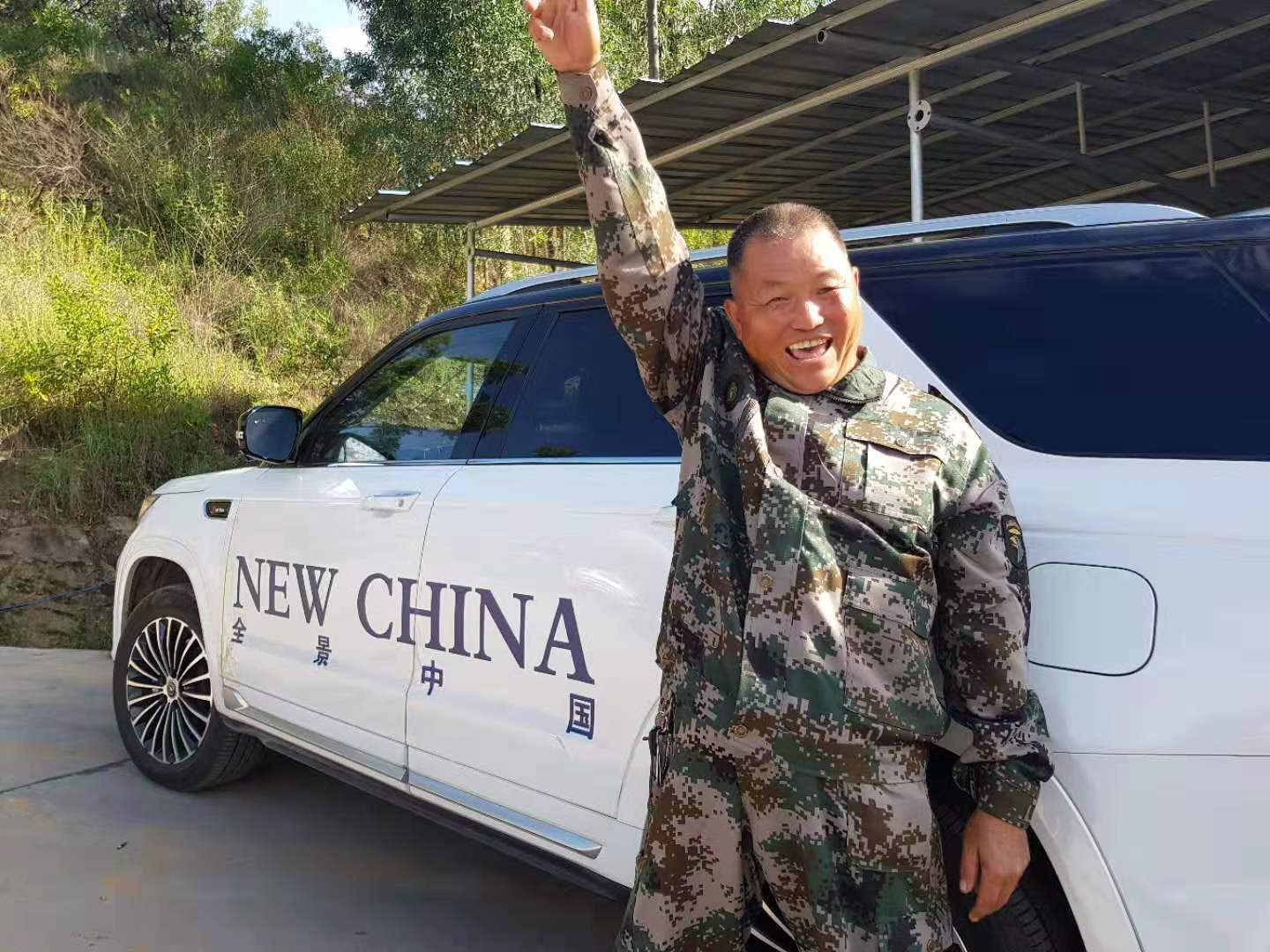
A mango farmer poses in front of our Changan car that took us across southwest China. /CGTN Photo
A mango farmer poses in front of our Changan car that took us across southwest China. /CGTN Photo
Nine days, over 3,000 kilometers on the road and multiple cities across three provinces and one municipality.
Traveling across southwest China by car with my cameraman and a colleague driving us around — we felt like a family. They saw me at my best and worst: My moments of frustrations were transparent when I juggled liaising with one interviewee after another, when the signal was bumpy just minutes before my live cross, when I had to make changes at the 11th hour on my deliverable and so on.
As I wrote this on a high-speed train on the way back to Chengdu from Chongqing (my job was done earlier with the team still pressing on), I knew for sure that the journey in the past week was something I most likely would not have been able to experience had I not been part of this channel.
My favorite moments include getting to see how the revered Chinese liquor Maotai is produced and packaged, being so close to mountains and nature in a county in Liangshan Yi Autonomous Prefecture, and being received warmly by villagers in a mango farm in Sichuan's Panzhihua, a city most known for its iron and steel production. All this happened in southwest China.
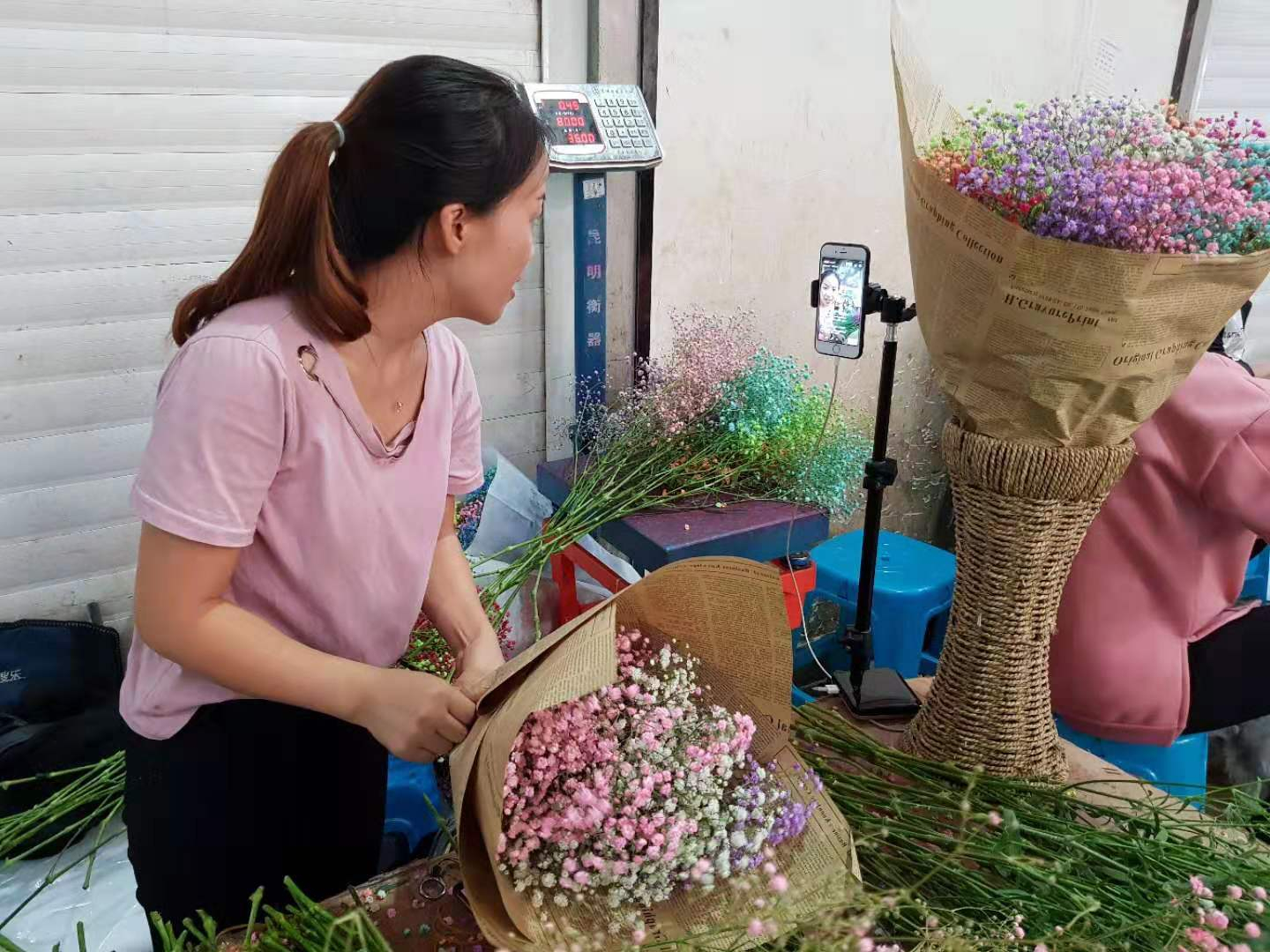
This lady live streams on Taobao a few hours a day to sell the flower gypsophila, or babysbreath, at a flower market in Kunming, southwest China. /CGTN Photo
This lady live streams on Taobao a few hours a day to sell the flower gypsophila, or babysbreath, at a flower market in Kunming, southwest China. /CGTN Photo
With the little down time that we had, I went on my own to explore the Kunming Dounan flower market in Yunnan Province, and saw how a lady sells flowers via livestreaming.
"It's hard to earn money these days," the woman, who hails from the nearby province of Guizhou, told me. For over three hours, she would juggle selling gypsophila, or babysbreath, via her physical store right at the back of the market, while also streaming live and conversing with customers on Taobao, the world's biggest e-commerce site.
I observed her for a good 10 minutes in which I think she made at least two livestream sales to people in other provinces. I even asked her to show me when she seals a deal and how she receives payment (immediately). She sends these bunches off at 5 in the evening every day, and they reach anywhere across the country within two days. I was amazed.
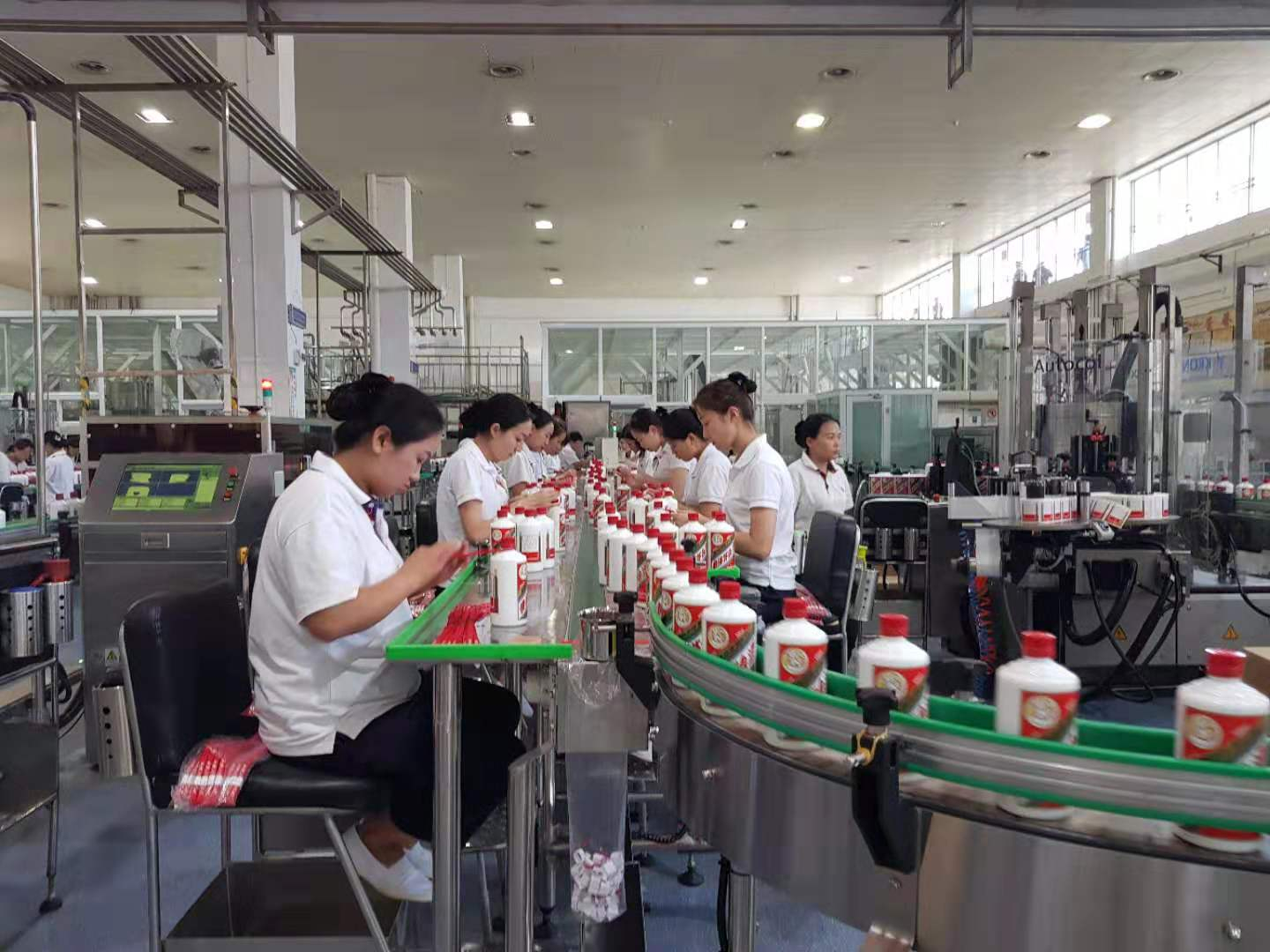
You'll find mostly women staff at Kweichow Moutai's packaging lines working systemically. /CGTN Photo
You'll find mostly women staff at Kweichow Moutai's packaging lines working systemically. /CGTN Photo
Most of Kweichow Moutai's production is still done manually
I read about Kweichow Moutai even before I came to China two years ago — the company's Shanghai-listed shares that have been on a continuous rise in the past few years, that is.
Not until I've had the chance to taste baijiu (white liquor) during dinners — both formal and informal — here in China that I could see why this fiery liquor is so deeply rooted in the Chinese culture, and that Maotai among all brands still commands a certain sense of power.
I had the chance to see how the mixture of steamed red sorghum and fermented grains (also known as "qu" in Chinese, which is a fermentation starter) is left to ferment via an open stacking process and a closed pit one. I also had the chance to observe how these Maotai bottles are packaged — from capping to labeling to the trademark tying of red ribbons on the bottle necks.
Two things struck me: Most of the fermentation and distillation processes are still done manually, and workers in the packaging lines are obsessed with the details.
04:53
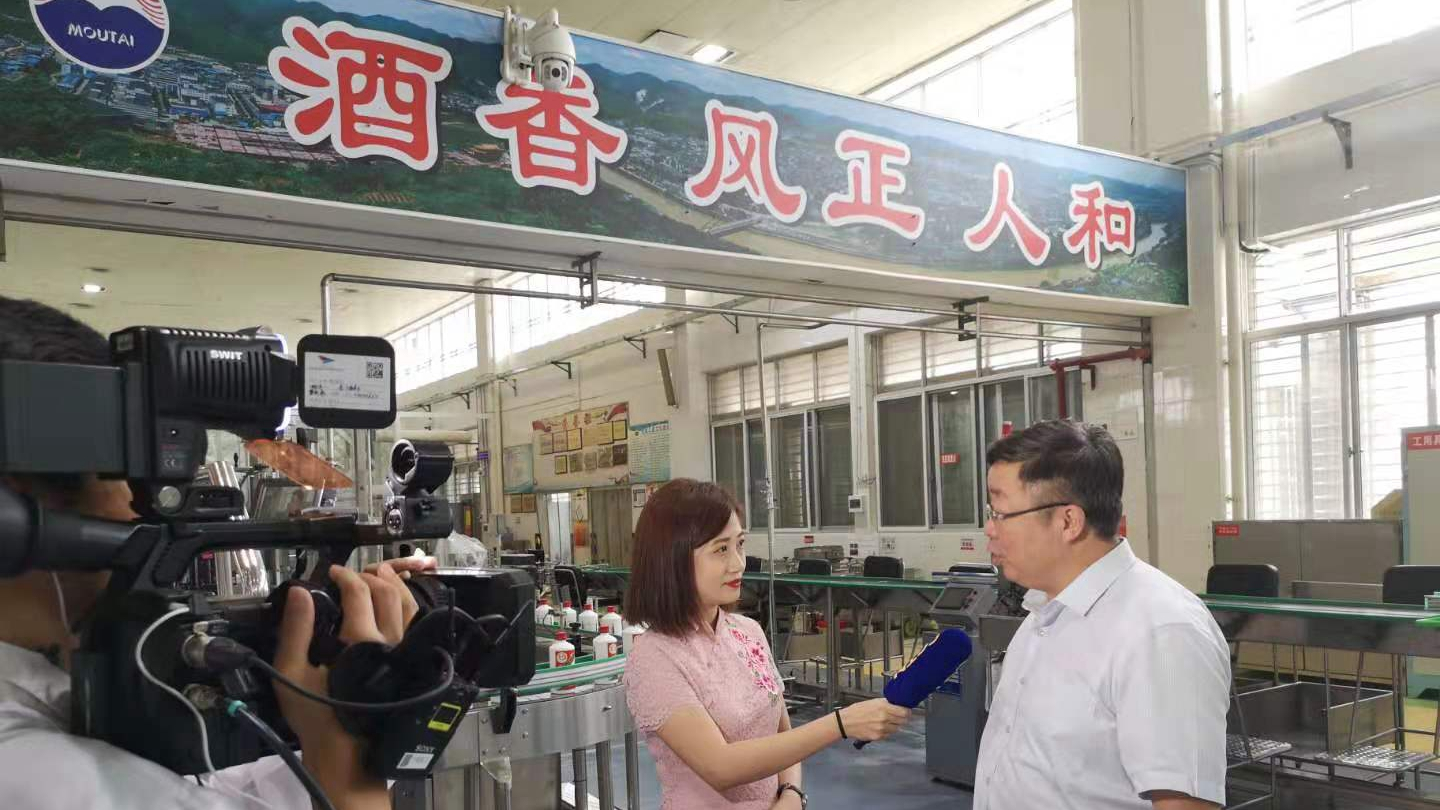
The only machinery used during the fermentation process is transferring the fermented mixture from an underground pit into the distiller.
Production line manager Mr. Ou recalls a time before the 1990s when there was no machinery and workers had to head down to the pit and carry the chunks of fermented mixture up by hands. "It was very tough," he said.
As these are no easy tasks, I was told by a company employee that the maximum age you can find in the company's factories is 28 years. And it looks like this time-honored brand and company is not facing any challenges in attracting young staff.

Quaint and alluring Maotai town which is home to over a thousand liquor enterprises./ CGTN photo
Quaint and alluring Maotai town which is home to over a thousand liquor enterprises./ CGTN photo
Panzhihua diversifies from 'steel city' to mango farming
You can't miss the backdrop of hydropower stations as you drive to the village in Panzhihua. Primarily a coal mining and iron and steel powerhouse since the 1970s, the local government has over time found ways to develop "mined out" areas, which happened as a result of depletion of coal resources.
And mango farming, which was found to suit the city's land and climate, has changed people's lives for the better.
Wang Qijun, a coal miner back in the late 1990s, ventured into planting mango trees in 2004 as mining activities were cut down due to the government's policy change.
"I managed to send my two sons to university, and now they're back to grow this business with me," he told me. Wang, who owns some 4.7 hectares of mango farmland, saw his income increase multiple-fold from just 10,000 a year when he was a miner, to now over 200,000 a year from selling mangos.
02:33

The way of life in Liangshan, one of China's poorest areas
This was my second time visiting a village in Liangshan. And I suppose I should be used to seeing such a way of life now after reporting on China's poverty alleviation for a year. But it still tugs at my heartstrings when I see people living so humbly.
Luohuo Aqie, a 53-year-old man of Yi ethnicity, told me he couldn't wait to move to his newly relocated home. "When it rains, the roof leaks. It's really dusty, and there's no ventilation here. Plus during winter, it gets very cold," he said when describing his present living conditions, in the Yi language.
"Although, I will miss being close to my livestock and farmlands," he added, when I asked if he would have a sense of attachment to his old home. His home is slightly better than some others I have seen as they have tap water and electricity.
05:27
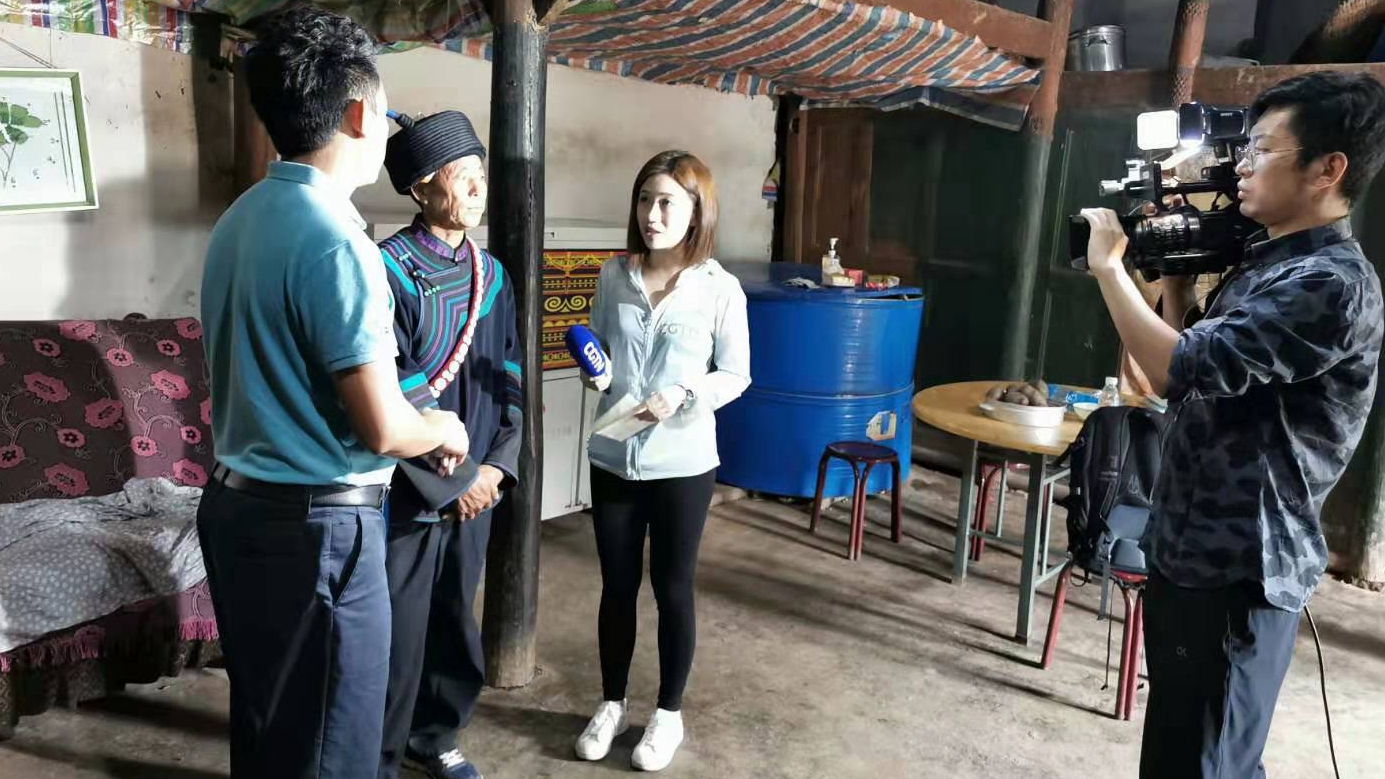
Luo lives with his daughter-in-law and his three grandchildren. His son is out in another province working — a common phenomenon for families in the village.
I was also told, when asked, that it's common for the Yi people to have many children, even while many still live in poverty.
Luo was lifted out of poverty in 2018, having earned 4,800 yuan a year, from livestock farming, agriculture farming of corn and Sichuan pepper, and government subsidies.
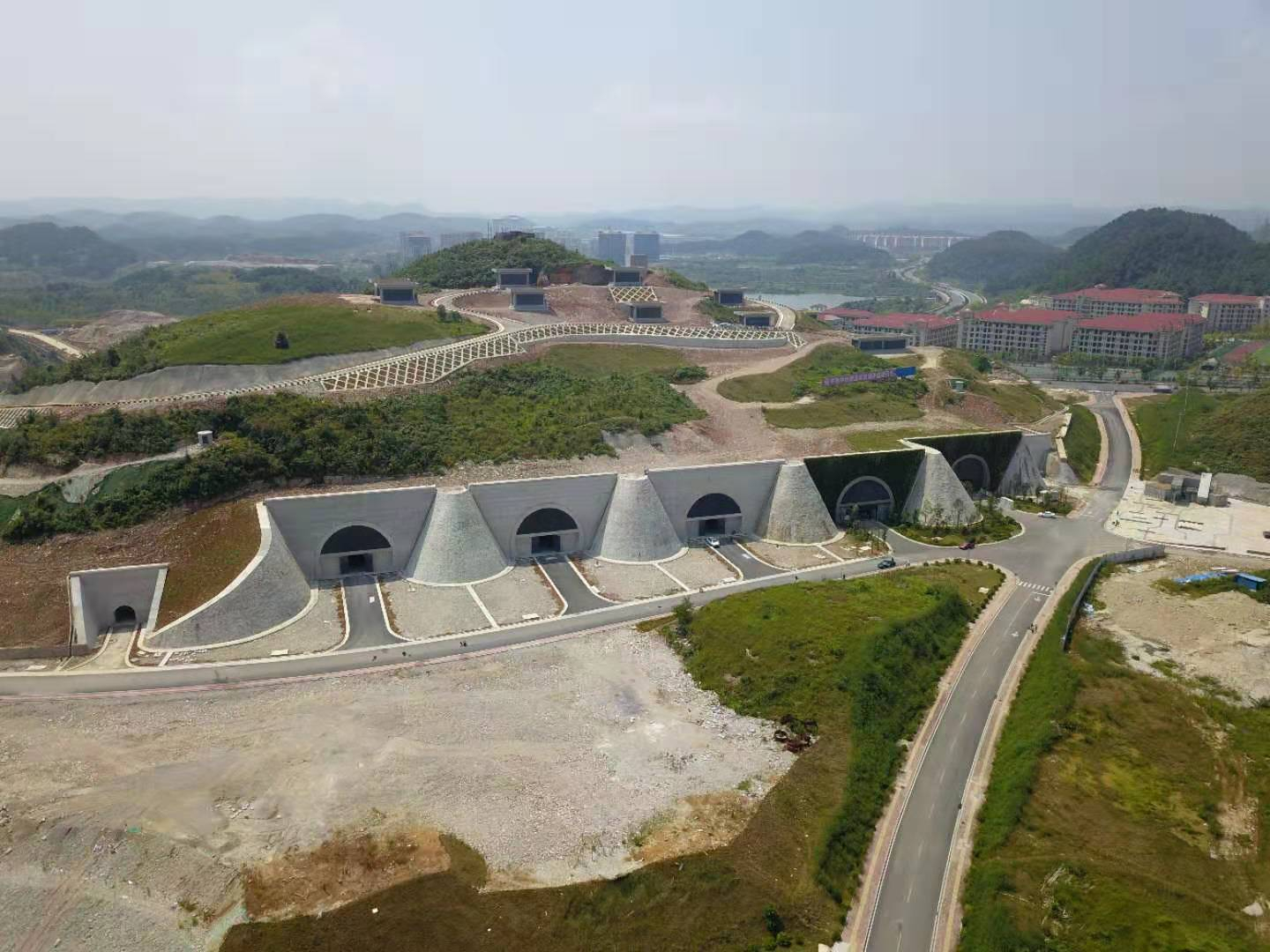
Tencent's Gui'an Seven Star Data Center is the only cave-like data center in the Gui'an New Area in Guizhou Province, southwest China./ CGTN photo
Tencent's Gui'an Seven Star Data Center is the only cave-like data center in the Gui'an New Area in Guizhou Province, southwest China./ CGTN photo
Tencent's data center will start ops soon
Tencent Holdings Limited, one of Asia's most valuable companies, has made use of Guiyang's karst landscape to build caves, in which it will store its most important data in the future.
"We built a shaft tunnel above five of our man-made caves. By combining the structure of the cave and the physical characteristics of the rock stratum, this ensures that the tunnel's air distribution characteristics will continuously send natural cold sources into the caves," said data center brand project manager Yan Jin.
"This is to achieve our goal of green energy conservation," she explained.
04:13
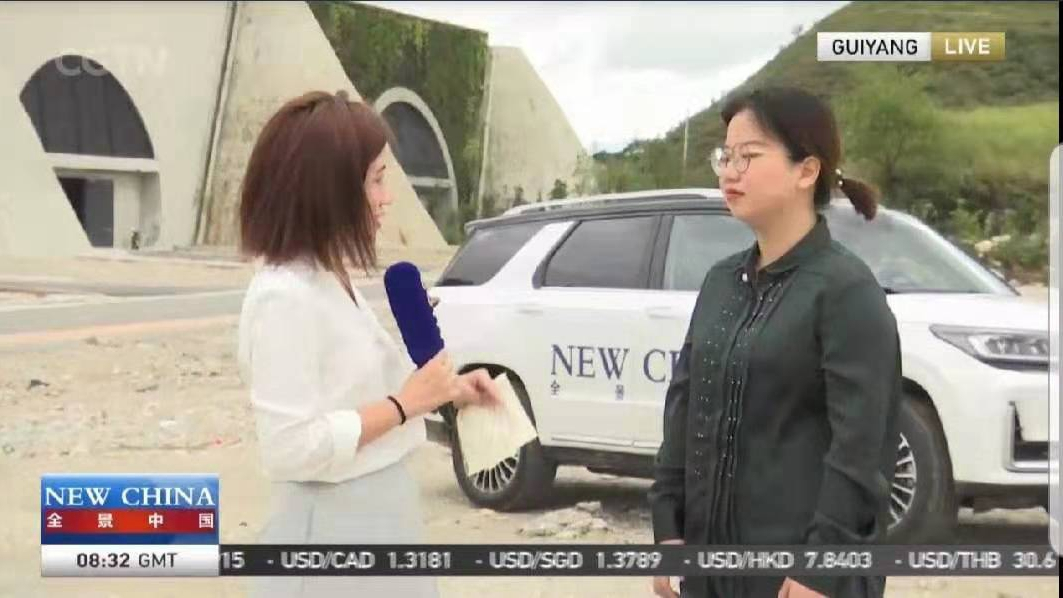
Yan added that the long-term operational costs of Tencent's Gui'an Seven Star data center are about 80 percent of that of data centers. This is because the power usage effectiveness (PUE) design value of all Tencent's new data centers is generally below 1.4.
PUE is a ratio that describes the efficiency of a computer data center in its energy usage, the amount of energy used by computing equipment. The lower the quotient is, the higher the efficiency.
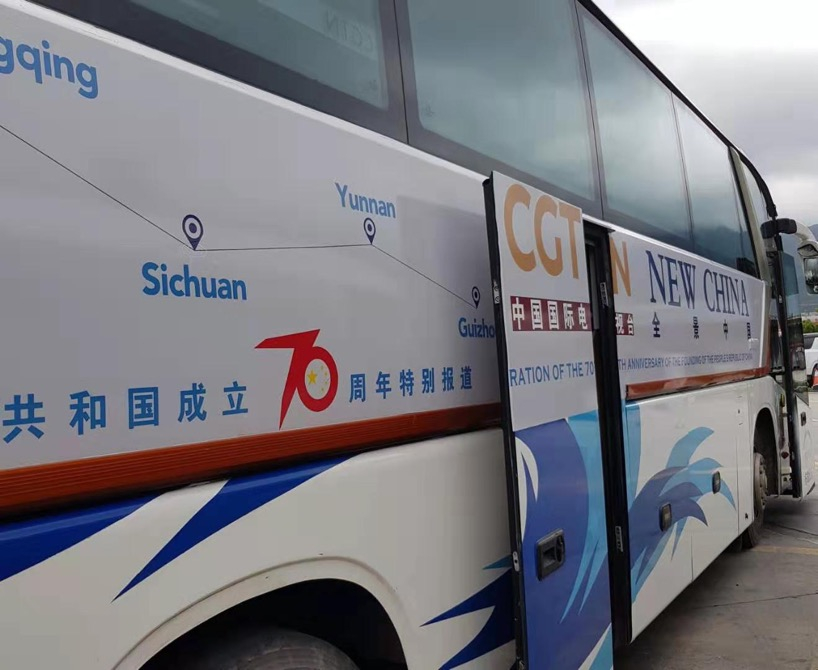
The bus on the southwest route./ CGTN photo
The bus on the southwest route./ CGTN photo
It's rare and precious to explore China this way – being on the road for days, seeing things from the ground up.
I will always remember the beautiful mountains, blue skies along the southwest China journey. But one more thing that lingers on is the smile and warmth we received from the villagers as we raced against the clock from one place to another.